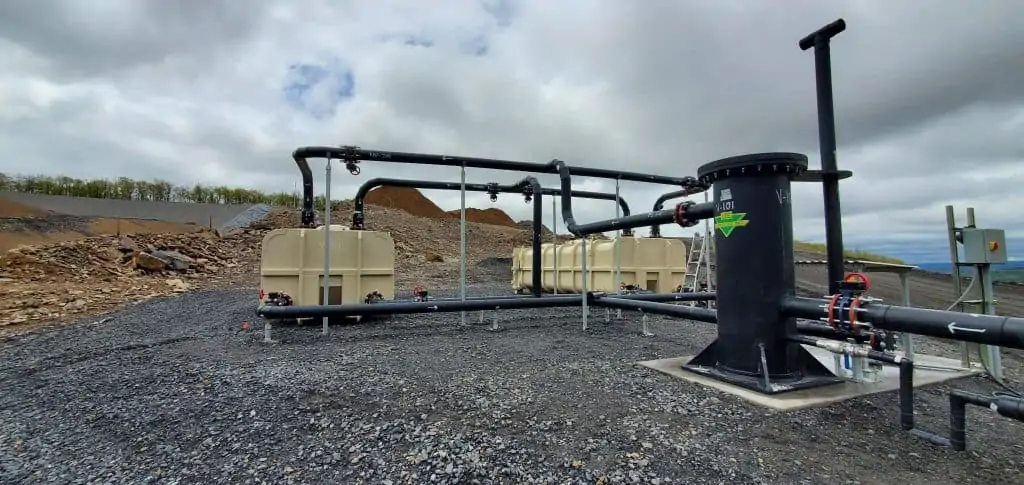

Site Name: Blythe Recycling and Demolition Site (BRADS) Landfill
Location: Schuylkill County, Pennsylvania
Project: Hydrogen Sulfide Treatment System
Landfills are a necessary aspect of modern life, and odor control is crucial for solid waste and recycling facilities to be good neighbors. Accomplishing it is easier said than done, especially at construction and demolition (C&D) landfills, as one Township in Pennsylvania discovered.
Opening in March 2019, the Blythe Recycling and Demolition Site (BRADS) Landfill accepts C&D waste. As decomposition began its normal cycle, the facility began to experience significant odors from wallboard and debris containing calcium sulfate. The anaerobic and saturated conditions in the Landfill promoted the generation of hydrogen sulfide gas, which is smelly.
Local citizens began reporting odor complaints to the Pennsylvania Department of Environmental Protection (PADEP), which prompted them to issue a Notice of Violation in April 2021. Local newspapers published articles about the situation, and citizens were handing out brochures to their neighbors to encourage them to file odor complaints with PADEP. The situation quickly became untenable for the Landfill and the surrounding communities.
Typically, flares destroy landfill gas from the decomposing organics within a landfill. However, since the Landfill was fairly “young,” there was not yet enough methane generated to support flare combustion. SCS Engineers recommended using a hydrogen sulfide treatment system consisting of vessels filled with solid scavenger type media to convert hydrogen sulfide gas to elemental sulfur. The pelletized media contains a form of iron hydroxide to react with the hydrogen sulfide in the gas stream to produce elemental sulfur and water as a byproduct.
In need of a sustainable but fast solution, the Landfill began working with SCS under a design/build agreement for the treatment system. The project was approved on April 7, 2021, and the system was fully operational in less than five weeks. This unusually rapid turnaround would not have been possible without the support from PADEP, who provided expeditious review and approval of the air and solid waste permit applications.
Best of all, the new system had an immediate effect, and odor complaints ceased. The willingness of the citizens, Landfill, PADEP, and SCS Engineers to work cohesively and openly made this a win for all.

ADDITIONAL TECHNICAL DESIGN FOR SUSTAINABILITY
In addition to the media-filled vessels, piping and a blower were installed to pull a vacuum from the leachate sump. The vessels operate in a lead-lag (aka series) fashion. Monitoring is completed at the inlet of treatment, between the two vessels, and at the outlet. The vessel is scheduled for media changeout once hydrogen sulfide is detected between the two vessels, called “breakthrough.” Once the media is changed, the lead-lag order is reversed so that the formerly downstream media is the lead vessel and the new media is the lag vessel. Since initial system completion, additional landfill gas collection points were installed within the landfill mass to supplement and sustain odor control.